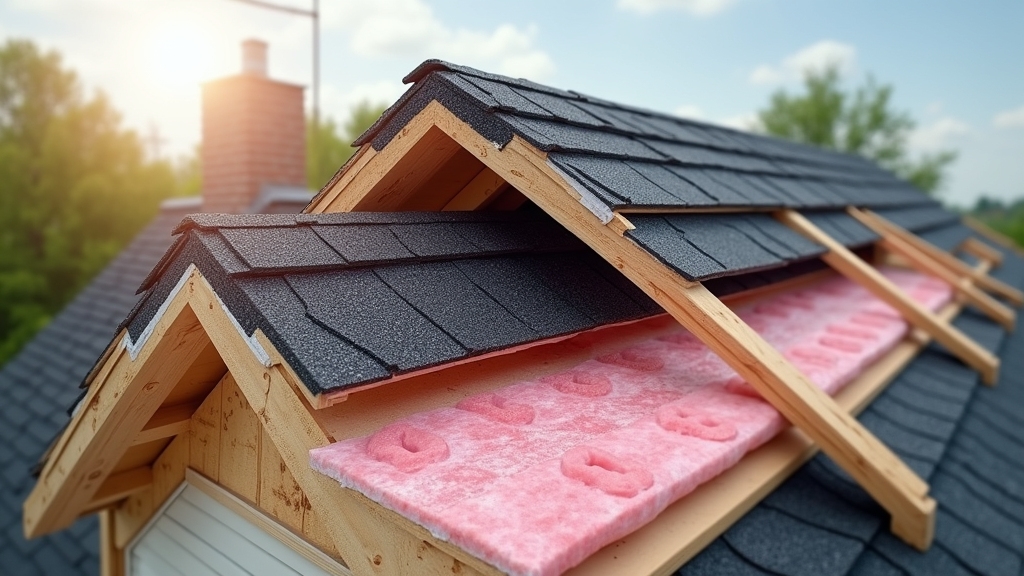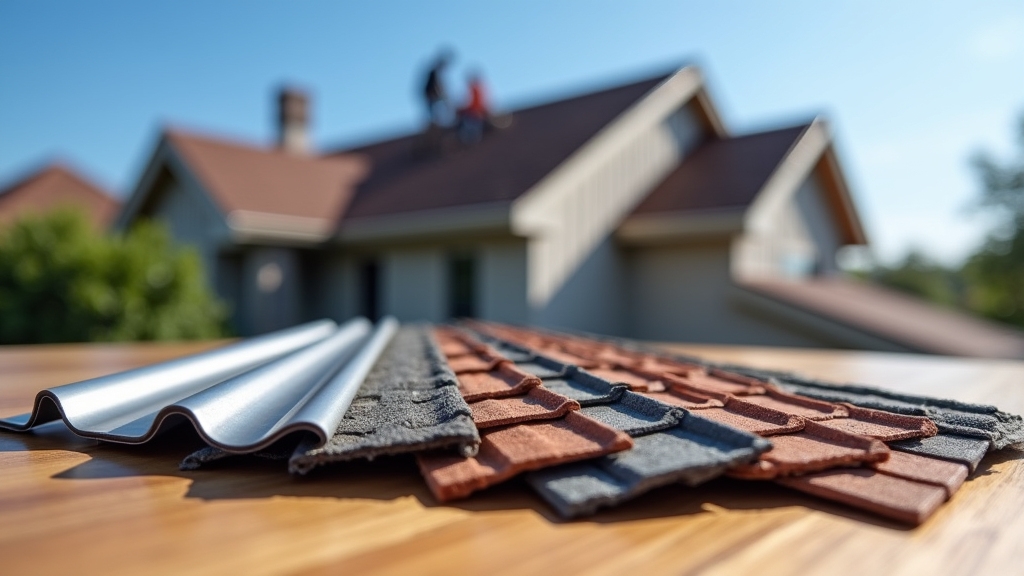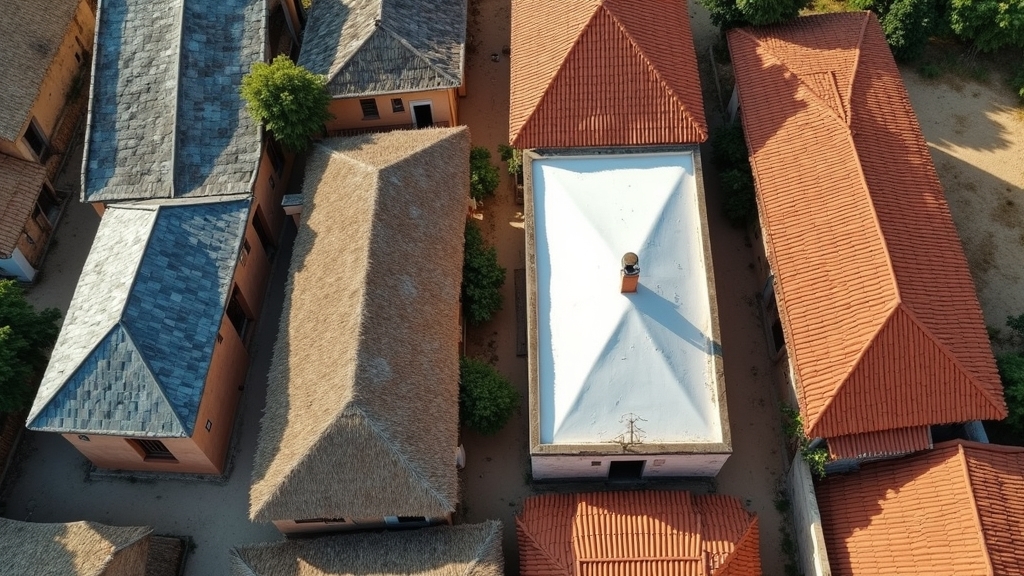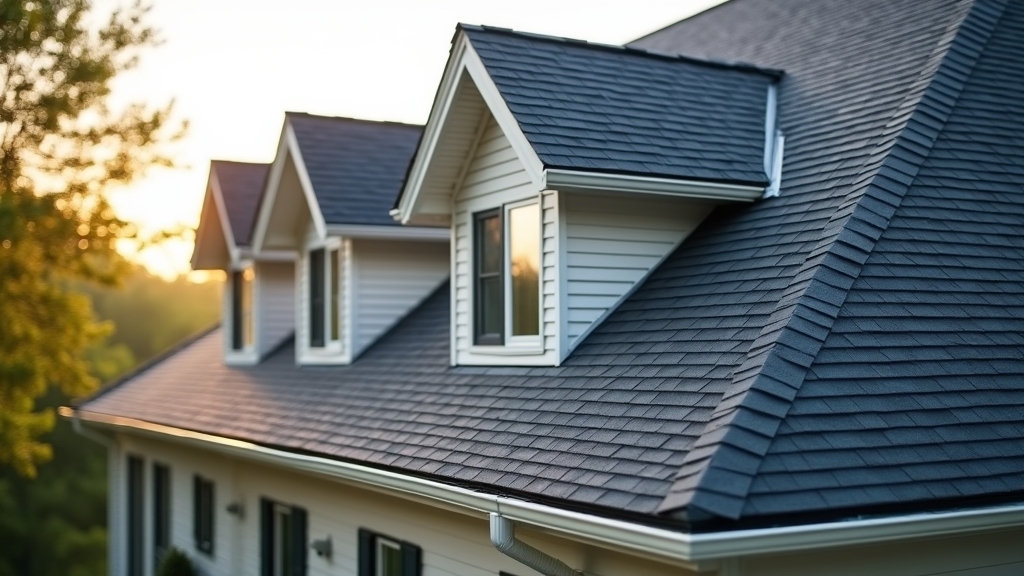Your roof does more than just keep out rain — it’s one of the most important parts of your home’s safety and comfort.
This guide explains everything you need to know about how roofs work, what materials to choose, how to save energy, and how to keep your roof in great shape for years.
What You’ll Learn
- The different parts of a roof and how they work together.
- The types of roofing materials and their pros and cons.
- How climate and building codes affect roof design.
- Energy-saving ideas and solar panel preparation.
- How to choose a reliable roofing contractor.
- How to care for your roof and spot early signs of damage.
Roof Basics: How a Roof Works

A roof is more than just shingles or tiles. It’s made of several layers that protect your home from water, wind, sun, and temperature changes. Understanding how these parts fit together helps you make smart choices when building or repairing your roof.
The Main Parts of a Roof
- Framing (Rafters or Trusses)
These are the wooden “bones” that give the roof its shape and strength. They hold up the weight of all the other layers, plus snow, rain, or even solar panels. - Sheathing (Decking)
These are large flat boards, often made of plywood or oriented strand board (OSB), attached to the framing. They form a solid surface for shingles or tiles to sit on. - Underlayment
This thin layer goes between the sheathing and the outer roofing. It acts like a raincoat, keeping out moisture and protecting the wood underneath. In cold areas, a special waterproof layer called an ice barrier is used along the roof edges to stop ice buildup. - Flashing
These are small pieces of metal that cover joints and corners where water could leak in—like around chimneys, skylights, or vents. Proper flashing is key to keeping water out. - Ventilation
Roof vents let air move through the attic. This keeps the roof cooler in summer, prevents moisture buildup in winter, and helps insulation work better. - Drip Edge
This is a thin strip of metal along the edge of the roof that helps rainwater flow into the gutters instead of behind them.
Each piece has a job to do, and together they create a strong, weatherproof system.
Roof Material Choices

There are many materials you can choose from when building or replacing a roof. The best one depends on your budget, the style of your home, and your local weather.
| Material | Lifespan | Benefits | Considerations |
| Asphalt Shingles | 15–30 years | Inexpensive, easy to install, available in many colors | Shorter lifespan; can fade in hot sun |
| Metal Roofing | 40–70 years | Long-lasting, lightweight, recyclable, great for shedding snow | Can be noisy in rain if not insulated; higher cost upfront |
| Clay or Concrete Tile | 50–100 years | Very durable, fire-resistant, looks great on certain homes | Heavy; may require stronger roof framing |
| Wood Shingles or Shakes | 25–40 years | Natural, classic look | Needs more maintenance; can attract mold or insects |
| Slate | 75–100+ years | Extremely strong, beautiful, and long-lasting | Very heavy and expensive; needs skilled installation |
When choosing a material, think about both short-term cost and long-term value. A roof that lasts twice as long may be worth the higher price if you plan to stay in your home.
Roofs for Different Climates

Not every roof works everywhere. Weather and climate have a big impact on what materials and designs will last the longest.
- Windy or Stormy Areas:
Roofs in coastal or hurricane-prone zones need stronger fasteners and wind-resistant materials. Metal roofs and special shingles with strong adhesive strips perform best. - Snowy or Cold Areas:
Roofs should have a steep slope so snow can slide off. Ice barriers and good attic ventilation help prevent ice dams that can cause leaks. - Hot or Sunny Areas:
Light-colored “cool” roofs reflect sunlight and keep homes cooler. Clay tile, concrete tile, and reflective metal roofing are good options. - Rainy or Humid Areas:
Proper drainage and waterproof layers are key. Avoid materials that trap moisture, and keep gutters clear so water can flow freely.
Always check local building codes, which are laws that make sure your roof can handle the climate where you live. Your contractor should know these rules and follow them.
Ventilation and Insulation: Keeping Your Home Comfortable
A roof isn’t just about what’s on top—it’s also about what happens underneath. Proper ventilation and insulation make your roof more efficient and prevent costly problems.
- Ventilation allows fresh air to move in and out of the attic. This helps remove heat and moisture. Without it, the attic can get too hot in summer and too damp in winter, causing mold or rot.
Air usually enters through vents near the edges of the roof (called soffit vents) and exits through vents at the top (ridge vents). - Insulation keeps warm air inside during winter and hot air outside during summer. The right insulation also saves energy and lowers heating and cooling bills.
Some roofs are vented, with open airspaces under the roof deck. Others are unvented, sealed tightly with special foam insulation that stops air leaks. Both can work well if designed properly.
When insulation and ventilation work together, they keep your roof healthy and your home comfortable all year long.
Cost, Lifespan, and Value
Roofs can be expensive, so it’s smart to think about both upfront costs and long-term value.
- Asphalt shingles are the cheapest to install but may need replacing sooner.
- Metal and tile roofs cost more at first but can last several decades.
- Slate roofs can last a lifetime but are the most expensive and heavy.
Other costs include labor, permits, and any repairs to the underlying structure.
A roof’s return on investment (ROI) depends on how long it lasts and how well it protects your home. A high-quality roof can also increase your home’s resale value.
To make your investment last, choose:
- Durable underlayment materials.
- Rust-resistant nails and fasteners.
- Proper flashing around all openings.
- Regular maintenance and inspections.
These small details prevent leaks and extend your roof’s life.
Energy Efficiency and Solar-Ready Roofs
Modern roofs can do more than just protect—they can also save energy and support solar panels.
Cool Roofs
“Cool roofs” have special materials that reflect sunlight instead of absorbing it.
They stay cooler, reduce air-conditioning costs, and help fight the “heat island” effect in cities.
Cool roofs can be:
- Light-colored asphalt shingles with reflective granules.
- Metal panels coated with reflective paint.
- White single-ply membranes used on flat roofs.
- Tiles or coatings made with reflective glaze.
When choosing a cool roof, look for products labeled with tested reflectance ratings.
Solar-Ready Roofs
If you plan to add solar panels, it’s smart to design your roof for them now.
That means:
- Making sure your roof faces south (in the Northern Hemisphere).
- Avoiding shade from trees or nearby buildings.
- Ensuring your framing is strong enough to hold the panels.
- Using roofing materials that can be sealed safely around panel mounts.
Installing a solar-ready roof helps avoid costly changes later and can make your home more energy independent.
Choosing the Right Roofing Contractor
Your roof will only perform as well as the people who install it. Choosing a trustworthy, skilled contractor is one of the most important steps.
Here’s how to find the right one:
- Check Experience
Ask how long they’ve been in business and what types of roofs they’ve worked on. A contractor with experience in your area will know the local weather and codes. - Ask for References
Request photos or addresses of recent projects. Talk to past customers about their experience and satisfaction. - Verify License and Insurance
Always make sure the company is properly licensed and insured. This protects you if something goes wrong during the project. - Get Everything in Writing
The contract should list all materials, costs, start and finish dates, and warranties. Avoid vague promises or handshake deals. - Compare Bids, Not Just Prices
The cheapest estimate is not always the best. Look for clear details about materials, safety, and cleanup.
Taking time to vet your roofer ensures your investment is protected and your home is safe.
Warranties, Permits, and Insurance
Before work begins, there are a few important documents you’ll need.
- Building Permits:
Most towns require a permit for roof work. This ensures your roof meets local safety codes. - Warranties:
Ask for a written warranty from both the manufacturer and the contractor.
- A material warranty covers the shingles, tiles, or panels.
- A workmanship warranty covers installation errors.
- A material warranty covers the shingles, tiles, or panels.
- Read the fine print—some warranties don’t apply if the roof isn’t ventilated properly or if unapproved materials are used.
- Insurance:
Check your homeowner’s insurance. Some policies offer discounts for impact-resistant or fire-rated roofing materials. Take pictures before and after work to document the project.
Keeping good records helps you if you ever need to file a claim.
Roof Care and Maintenance
Even the best roofs need regular care. A simple maintenance routine can prevent big problems later.
When to Inspect
- Twice a year (spring and fall)
- After heavy rain, wind, or hail
- Before and after winter
What to Look For
- Missing, cracked, or curled shingles
- Rust or loose metal flashing
- Blocked gutters or downspouts
- Water stains on ceilings or in the attic
- Moss or algae growth
- Damaged or sagging areas
What to Do
- Clean gutters and downspouts.
- Remove leaves, branches, and debris.
- Trim tree limbs that touch or hang over the roof.
- Replace damaged shingles right away.
- Keep records and take photos after each inspection.
A few hours of care each year can add many years to your roof’s life.
Frequently Asked Questions
Does a new roof increase home value?
Yes. A strong, attractive roof improves curb appeal and can raise your home’s resale value. Buyers are more confident in homes with new, high-quality roofs.
Can technology help find roof leaks early?
Yes. New smart sensors can detect changes in moisture and temperature in your attic, warning you about leaks before you see damage.
Which roof is quietest during rain?
Thicker materials like tile, slate, or insulated metal are quieter. Adding insulation below the roof also helps reduce noise.
Do I need permission from my Homeowners Association (HOA)?
If you live in an HOA neighborhood, you usually need approval for the roof color and style. Always check before starting work to avoid fines or delays.
Can old roofing be recycled?
Yes. Many materials can be reused or recycled:
- Asphalt shingles can be turned into road material.
- Metal roofs can be melted down and reused.
- Concrete or clay tiles can be crushed and repurposed.
- Wood shakes can sometimes be composted if untreated.
Final Thoughts
Your roof is more than just a barrier against the elements — it’s the foundation of your home’s comfort, safety, and long-term value. A great roof doesn’t just happen; it’s built with quality materials, careful design, and expert installation.
To make the most of your roofing investment, choose materials suited to your budget and Michigan’s climate, whether that’s asphalt shingles, metal roofing, or composite roofing. Work only with licensed and experienced contractors who follow local codes, obtain proper permits, and stand behind their work with written warranties.
Regular inspections and timely repairs can prevent small issues from turning into major damage — especially when handled by professionals who understand local conditions. Schedule a roof inspection at least twice a year to ensure your system stays in top condition.
At Premiere Roofing Macomb, we specialize in residential roofing, roof replacements, and siding services that combine premium materials with precision craftsmanship. Our team is fully licensed, insured, and dedicated to helping homeowners protect and enhance their properties across Macomb County and surrounding areas.
If your roof is aging, showing signs of wear, or you’re planning a new installation, now is the perfect time to act
.
Call Premiere Roofing Macomb today at (586) 496-4621 or visit our Contact Page to request your free, no-obligation estimate. Premiere Roofing Macomb — “Protecting homes, preserving value, and keeping Michigan families covered.”

